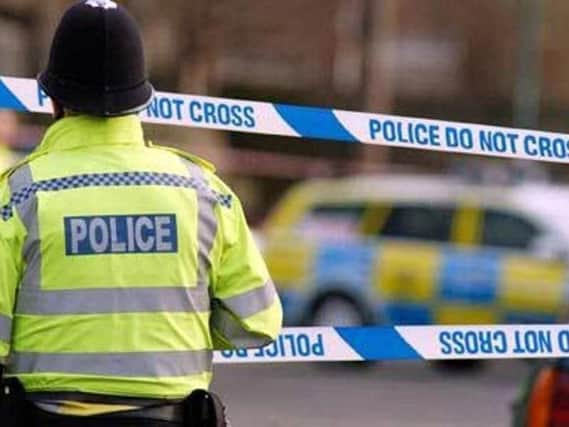Anger after knife crime is omitted from new report into safety threats in Lancashire


Councillors from across the political divide condemned the omission and insisted that the problem be included.
While violence against the person is listed as one of the main threat facing residents, there is no specific mention of knife crime - in spite of statistics which emerged last month showing that it had increased by a third in the county since 2013.
Advertisement
Hide AdAdvertisement
Hide AdJust 24 hours after a knife fight at Runshaw College in Leyland, in which a 17-year-old boy was stabbed, members of Lancashire County Council’s external scrutiny committee said that the “disease” of knife crime had to be tackled.


“Once people [see others] carrying knives, they start carrying knives as well - and that increases the potential of there being an attack,” Conservative committee member David Foxcroft said.
“We must include a commitment to not allowing the epidemic of knife crime seen in other parts of the country to come and take root in Lancashire. We must make a statement - and this is the perfect document to say what we intend to do”.
Labour opposition leader, Azhar Ali, said he did not believe that there was a single secondary school in East Lancashire where a drug culture had not taken hold.
“There is a link between knife crime and drugs,” he said.
Advertisement
Hide AdAdvertisement
Hide Ad“There is a gang culture which has developed in our neighbourhoods, particularly within schools - what are we going to do about it?”
Officers from Lancashire County Council’s public health department said they understood the strength of feeling amongst committee members.
“This is a high level document - the detail about what we would do about any particular community safety issue would have to be worked through with partners at a local level,” said Debbie Thompson, a public health specialist at the authority.
Meanwhile, the director of the office of the county’s Police and Crime Commissioner added that knife violence is not a uniform problem across the UK.
Advertisement
Hide AdAdvertisement
Hide Ad“Knife crime is not the same in London as it in Lancashire - we’ve got a very different profile and we need to reassure the residents [of that],” Angela Harrison said.
“Lancashire Constabulary, along with its partners, works on intelligence around the clock, in order to deal with issues around prevention.”
Office for National Statistics data shows that there were 58 incidents of knife crime per 100,000 people in Lancashire in 2017/18, lower than the national figure of 69.
Cabinet member for culture, Peter Buckley, moved a recommendation that knife crime be added to the list of specific priorities listed in the Community Safety Strategy for Lancashire, which will come into force next month and run until 2022.
Advertisement
Hide AdAdvertisement
Hide AdThe meeting also heard that the document could be regularly refreshed during that period to reflect any emerging crime issues.
'Disconnect' over knife crime
Councillors were told that they may be picking up grassroots information which is not always fed back to the police.
Robert Rushton, partnerships officer from the office of the PCC, said the gap between perception and reality needed to be bridged. He described his experience at a youth forum in Blackpool which he attended, along with a local police sergeant.
“As far as the officer was concerned, in the period [under discussion], there had been two or three incidences of knife crime involving people under the age of 18,” Mr. Rushton explained.
Advertisement
Hide AdAdvertisement
Hide Ad“When we asked the young people what their experience was of the proportion of young people who carried knives, 50 percent knew people who did. For the officer sat next to me, that was quite different to the information he had.”